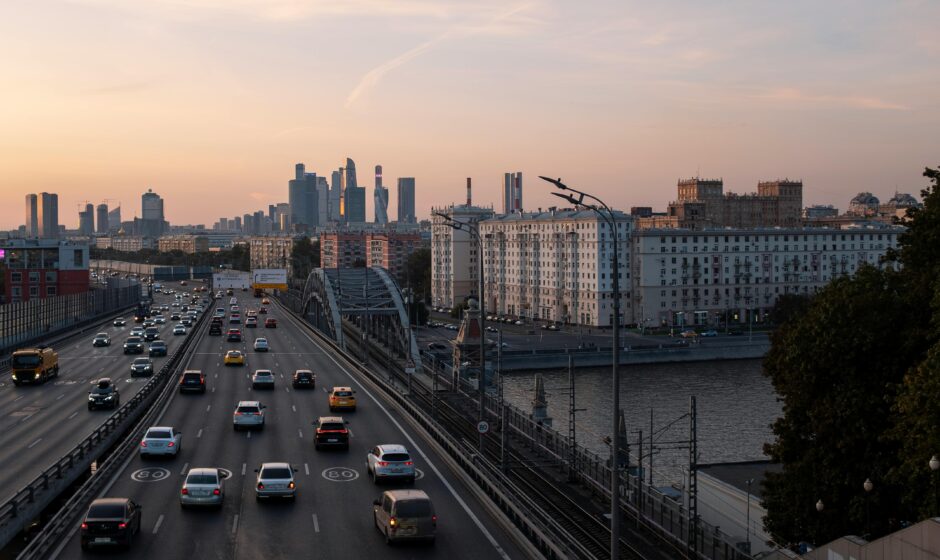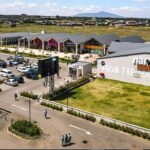A few years ago, preparing for a road trip, especially a long one, meant shopping for all necessary supplies in advance. Travelers had to anticipate every need before setting off. Today, that level of preparation is no longer essential, thanks to the rise of stopover malls. Travelers can now pack their cars, hit the road, and pick up what they need within minutes from conveniently located malls along the highway. This convenience isn’t limited to private vehicle owners; even those using public transport benefit, as some service providers intentionally stop at these centres to allow passengers to grab essentials, stretch, or use the restroom.
Over the last decade, Kenya’s retail landscape has witnessed a quiet revolution. Traditional shopping malls are now being complemented by a newer, more agile format: convenience malls. These hubs offer a blend of lifestyle shopping, fast service, and transit comfort.
Internationally, the term “convenience store” refers to compact outlets that provide everyday essentials and remain open late into the night. However, Kenya’s version has taken a unique twist. Locally, “convenience malls” or “stopover centres” are typically small-to-medium-sized commercial hubs that combine fuel stations, supermarkets, eateries, banking halls, restrooms, and lifestyle amenities. Some, like Safari Centre in Naivasha, even feature specialty outlets such as shoe shops. These centres are strategically positioned along major highways and commuter routes, targeting travelers, long-distance drivers, and peri-urban residents alike.
Examples of stopover malls in Kenya include the Safari Centre in Naivasha, a lifestyle complex catering to tourists and travelers between Nairobi and Western Kenya. Another example is Supa Stop in Sultan Hamud along Mombasa Road, which serves as a rest point for truck drivers and motorists, offering hotel facilities and secure parking. There is also My Town in Karen, a suburban development blending shops, dining, residential, and office spaces.
Several factors have led to the rise of stopover malls in Kenya, with increasing road travel being a major driver. Major transport corridors like the Northern Corridor which links Kenya to other East African countries through the Mombasa-Nairobi-Malaba highway coupled with infrastructure developments, such as the expansion of major highways like the Nairobi–Mombasa Road and Nairobi–Nakuru Highway, have made road travel more efficient and comfortable. As a result, more people now travel by car.
Increased domestic tourism has also contributed to increased foot traffic in convenience stores. For instance, according to the Kenya News Agency domestic tourism with bed night occupancy rising by 12 percent, from 4,618,094 in 2023 to 5,173,966 in 2024. Such stops also serve parents of children who school far away from home when they pick and drop their children on closing and opening days or when schools go on trips. As a result, some stopover points like have included parking spots for buses.
Evolving consumer behaviour has also played a crucial role. Today’s shopper prioritizes convenience over tradition. The ability to grab a coffee, fuel the car, pick up groceries, and use clean restrooms all in one location makes these malls increasingly attractive. Instead of spending hours in large malls, urban consumers and travelers are gravitating toward smaller, easily accessible centres that allow them to complete multiple tasks quickly and efficiently. Moreover, even though large shopping malls beefed up their security measures after the Wesgate Shopping Mall in 2014, security checks conducted in these malls are not satisfactory due to high foot traffic especially on weekends. Moreover, navigating parking in these spaces is also a nightmare that pushes shoppers to neighborhood convenience store. Trends also show that modern shoppers have moved away from the traditional weekly shopping model toward daily or need-based shopping, further increasing demand for stopover malls.
Originally, stopover points consisted of separate businesses offering various services needed by commuters. The convenience mall places all these services under one roof. Travelers can park directly in front of stores and access what they need in minutes, something that is often more time-consuming in traditional retail spaces. These centres often feature supermarkets such as Chandarana and Quickmart, alongside fast food chains like KFC, Java House, Artcaffe, and Pizza Inn. Artisanal vendors selling local snacks, fresh fruit, and souvenirs also contribute to a sense of place and local identity.
A major attraction is the presence of clean, accessible washrooms. Many centres include children’s play areas, shaded benches, and rest zones where travelers can relax. Some, such as Safari Centre Naivasha and Supa Stop, go a step further by offering accommodation for long-distance drivers and tourists. Most are anchored by major petrol stations like Shell, Total, or Rubis, and often include car washes, tyre services, and auto repair bays. Stopover points are also taking advantage of the thriving Nyama Choma culture in Kenya by incorporating barbecue spaces. A good example is the recently opened Mbuzi Munch at Delamere stopover in Naivasha.
Beyond retail and transit services, these malls support local enterprise by hosting curio shops, vegetable markets, and small boutiques. This not only gives travelers a taste of local culture but also promotes community-based economic activity. Their open-air designs make them feel less crowded than enclosed malls. Coupled with ample lighting, 24-hour security patrols, and CCTV systems, visitors feel safe even during late hours.
Over time, stopover malls have continued to evolve. For instance, My Town Karen now includes a bank and a pharmacy, reflecting their growing role as comprehensive service points. With increasing public interest in convenience-driven developments, these malls are also attracting real estate investors. Developers such as Fedha Group (behind Safari Centre), Superior Homes Kenya (Supa Stop), and MySpace Properties are leading this shift. Their appeal lies in the steady foot traffic, lower capital requirements compared to traditional malls, and the high demand for accessible, roadside retail and service centres.
Unlike traditional malls that often require large capital outlays and complex infrastructure, stopover centres are typically smaller, quicker to develop, and easier to maintain. They attract a diverse mix of tenants including fuel stations, eateries, and service providers, and increasingly feature entertainment spaces to generate consistent daily revenue. As land values rise in peri-urban areas and transit towns like Salama, Mtito Andei, and Naivasha, early investors are likely to benefit from capital appreciation. These developments also present compelling opportunities for REITs (Real Estate Investment Trusts) and pooled investment vehicles seeking entry into the growing travel retail market.
According to the Africa Fusion Report, stopover malls have lower maintenance costs and require less labour than traditional malls, allowing them to offer lower rental rates. These savings can then be passed down to tenants and customers. Despite the growing popularity of e-commerce, stopover malls remain resilient. Services such as eateries, pharmacies, and fuel stations still require physical presence and continue to thrive.
Stopover malls are also evolving into social spaces. Consumers today don’t just want products, they want experiences. This shift has fueled the rise of experiential retail, where shopping includes engaging environments and activities that cannot be replicated online. Some stopover malls have begun incorporating interactive displays, pop-up shops, gyms, cinemas, and diverse dining options to meet this demand. For example, on the My Town website, the developer Mwenda Thuranira, explains that the mall’s concept was designed “to merge the refined design and experience of larger malls into compact, accessible spaces built with sustainability, scalability, and affordability in mind.”
Towns like Salama and Sultan Hamud, once sleepy transit stops, are now lively centres where families take breaks, couples take road trip selfies, and truck drivers find safe places to rest. These malls have created new jobs in retail, hospitality, maintenance, and security. They are even contributing to the growth of satellite towns like Mtito Andei by attracting businesses and improving local infrastructure.
The rise in strip malls as real estate investment option is not novel to Africa. In Europe different countries have registered a marked increase in strip malls which are commonly known as retail parks. In the Czesh republic for example retail park spaces increased by 41 % in 2023 and in Bulgaria there was a reported increase of 50%. However, there are several differences between the roadside retail landscape in Europe. The UK for example has a curious phenomenon where rest stops, the equivalent of strip malls in Kenya have been on the decline. Rest stops in the UK are mainly used by vehicle managers and feature at the very least a place to sleep and eat, a fueling station and a service station. A survey by motorway service developers found that only 8% of users felt these rest stops offered value for money, a steep decline from 11% in 2021. Concerns include poor security, outdated amenities, and underwhelming rest zones. Despite efforts by the National Highways Authority to boost investment including a 2022 circular easing requirements to just toilets, baby changing facilities, free Wi-Fi, charging stations, and universal parking there have been no significant new developments in the past five years.
Users on platforms like Reddit often point to the UK’s compact geography as a factor. Since towns are situated along most highways, drivers can simply stop in towns or wait until they get home, reducing the need for purpose-built rest stops.
That said, the UK also has neighborhood convenience stores that have been on the rise. They’re often located near schools or residential areas and feature large parking spaces. This model has shown steady growth. In 2023, there were approximately 49,400 such stores, generating nearly £49 billion in turnover. Projections estimate this will rise to £50 billion by 2026. Growth has been driven by expanding suburbs, more remote working, and the broader rise in convenience culture.
Technology adoption is also transforming UK stores, with innovations like electronic shelf-edge labels and mission-led product layouts. For instance, food meant for on-the-go consumption is shelved near the entrance, while groceries intended for home use are placed farther inside. Kenyan supermarkets such as Naivas and Chandarana employ similar strategies. However, in Kenya, these stores still largely serve travelers, rather than surrounding communities. Retail parks in Europe also differ in the products they stock. For instance, in Netherlands it’s not uncommon to find roadside stores stocking vehicles, motorbikes and electronics.
Despite their many benefits, stopover malls face several challenges. Zoning and infrastructure planning are often inadequate, leading to issues such as traffic congestion, poor drainage, and overstretched utilities. Additionally, even when located near residential areas, many of these malls remain disconnected from the local community, focusing instead on transient users. For example, while some malls source groceries from local suppliers, pricing is often geared toward wealthier travelers rather than local residents. Moreover, their peripheral locations and car-heavy design make them less pedestrian-friendly especially for children.
Waste management is another pressing concern. As visitor numbers grow, these malls generate more waste, straining local disposal systems. Poor planning in this regard can raise environmental concerns. While big brands help drive foot traffic, they may also push out smaller vendors who cannot afford high rent. Another limitation is architectural sameness. Many stopover malls share similar designs, resulting in visual monotony and limiting their aesthetic appeal.
While the landscape differs slightly from one country to the other, the consensus is that there are opportunities for investors in strip malls firstly because they are resilient in that they can stock a mix of essential services, products and leisure which increases in high foot traffic. In some countries like the UK, regulations also make strip malls a good investment venture due to long leases that range from to 15 years. Here in Kenya, convenience malls are likely to play an increasingly dominant role in Kenya’s retail future. This will be driven by continued road expansion, increased vehicle ownership, and evolving consumer preferences. However, developers and investors must be proactive and innovative to address existing challenges.



